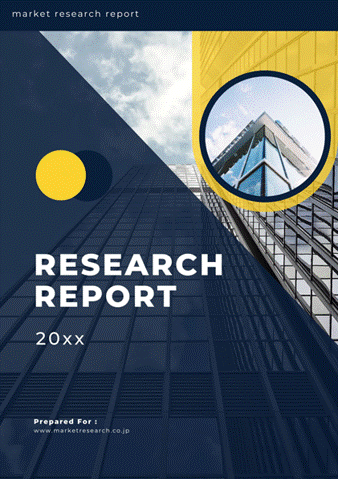 | • レポートコード:MRC2203A775 • 出版社/出版日:Mordor Intelligence / 2022年1月 • レポート形態:英文、PDF、100ページ • 納品方法:Eメール(受注後2-3営業日) • 産業分類:化学 |
| Single User | ¥703,000 (USD4,750) | ▷ お問い合わせ |
| Site Licence | ¥962,000 (USD6,500) | ▷ お問い合わせ |
| Corporate License | ¥1,295,000 (USD8,750) | ▷ お問い合わせ |
• お支払方法:銀行振込(納品後、ご請求書送付)
レポート概要
| Mordor Intelligence社の本調査資料では、世界の固化防止剤市場について調査・分析し、イントロダクション、調査手法、エグゼクティブサマリー、市場動向、種類別(カルシウム化合物、ナトリウム化合物、マグネシウム化合物、その他)分析、用途別(食品・飲料、化粧品・パーソナルケア、飼料、その他)分析、地域別(北米、ヨーロッパ、アジア太平洋、南米、中東・アフリカ)分析、競争状況、市場機会・将来の傾向などの項目を掲載しています。 ・イントロダクション ・調査手法 ・エグゼクティブサマリー ・市場動向 ・世界の固化防止剤市場規模:種類別(カルシウム化合物、ナトリウム化合物、マグネシウム化合物、その他) ・世界の固化防止剤市場規模:用途別(食品・飲料、化粧品・パーソナルケア、飼料、その他) ・世界の固化防止剤市場規模:地域別(北米、ヨーロッパ、アジア太平洋、南米、中東・アフリカ) ・競争状況(Applikon Biotechnology Inc.、Cellab GmbH、Danaher Corporation、...) ・市場機会・将来の傾向 |
The anti-caking market is projected to register a CAGR of 4.67% during the forecast period (2020-2025).
Key Highlights
- The consumption of food anti-caking agents is growing with the increasing number of applications in the food industry. The growth in the market is attributed to its moisture absorption functionality, which aids food products in maintaining their organoleptic properties and enhances the shelf-life in the manufacturing and processing of food.
- In addition, these agents are used in various food applications, such as bakery, dairy products, soups and sauces, and other applications.
Key Market Trends
Rising Consumption of Food Ingredients is Boosting the Anti-caking Market
The increasing number and diversity of food applications, changing consumer tastes, and growing level of consumer inclination toward enhanced food quality led to an expansion of the consumer base and innovation of varied food ingredients, including food coating ingredients, food and beverage premixes, and other food ingredients, including baking powder, milk and cream powder, cake mixes, and instant soup powder. The growth in the consumption of these food ingredients and products is projected to have a positive impact on the growth of food anti-caking agents, due to their free-flow, texture, long shelf-life, and other organoleptic properties. Moreover, the increasing consumption of various food ingredients is projected to boost the demand for food anti-caking agents.
Asia-Pacific is the Fastest Growing Region
Asia-Pacific is expected to witness a significant increase in the demand for anti-caking agents over the forecast period, owing to the rising population and increasing industrial output in China, India, and Japan. North America and Europe are high mature markets with demand expected to be driven by the application of anti-caking agents in processed foods. Several regulations implemented by the European Food Safety Authority, to restrict the development of anti-caking agents, are expected to challenge the growth of the European market. Growing demand for processed food in Brazil and Argentina, coupled with high demand for dairy products, is expected to complement the growth of the South American market over the forecast period.
Competitive Landscape
The leading players in the anti-caking agents market include Huber Engineered Material, BASF, Agropur Ingredients, and Kao Corp. Companies are investing in new facilities to expand their production capacities, in order to meet the increasing demand for anti-caking agents.
Additional Benefits:
- The market estimate (ME) sheet in Excel format
- 3 months of analyst support
1 INTRODUCTION
1.1 Study Assumptions and Market Definition
1.2 Scope of the Study
2 RESEARCH METHODOLOGY
3 EXECUTIVE SUMMARY
4 MARKET DYNAMICS
4.1 Market Drivers
4.2 Market Restraints
4.3 Industry Attractiveness – Porter’s Five Forces Analysis
4.3.1 Threat of New Entrants
4.3.2 Bargaining Power of Buyers/Consumers
4.3.3 Bargaining Power of Suppliers
4.3.4 Threat of Substitute Products
4.3.5 Intensity of Competitive Rivalry
5 MARKET SEGMENTATION
5.1 Type
5.1.1 Calcium Compounds
5.1.2 Sodium Compounds
5.1.3 Magnesium Compounds
5.1.4 Other Types
5.2 Application
5.2.1 Food and Beverage
5.2.1.1 Bakery Products
5.2.1.2 Dairy Products
5.2.1.3 Soups and Sauces
5.2.1.4 Beverages
5.2.1.5 Others
5.2.2 Cosmetic and Personal Care
5.2.3 Feed
5.2.4 Other Applications
5.3 Geography
5.3.1 North America
5.3.1.1 United States
5.3.1.2 Canada
5.3.1.3 Mexico
5.3.1.4 Rest of North America
5.3.2 Europe
5.3.2.1 Germany
5.3.2.2 United Kingdom
5.3.2.3 Italy
5.3.2.4 France
5.3.2.5 Russia
5.3.2.6 Spain
5.3.2.7 Rest of Europe
5.3.3 Asia-Pacific
5.3.3.1 India
5.3.3.2 China
5.3.3.3 Japan
5.3.3.4 Australia
5.3.3.5 Rest of Asia-Pacific
5.3.4 South America
5.3.4.1 Brazil
5.3.4.2 Argentina
5.3.4.3 Rest of South America
5.3.5 Middle-East and Africa
5.3.5.1 United Arab Emirates
5.3.5.2 South America
5.3.5.3 Rest of Middle-East and Africa
6 COMPETITIVE LANDSCAPE
6.1 Most Adopted Strategies
6.2 Most Active Companies
6.3 Company Profiles
6.3.1 Merck KGaA
6.3.2 Agropur US
6.3.3 BASF SE
6.3.4 Kao Corporation
6.3.5 PQ Corporation
6.3.6 IMAC Inc.
6.3.7 Huber Engineered Materials
6.3.8 Roquette Freres
7 MARKET OPPORTUNITIES AND FUTURE TRENDS